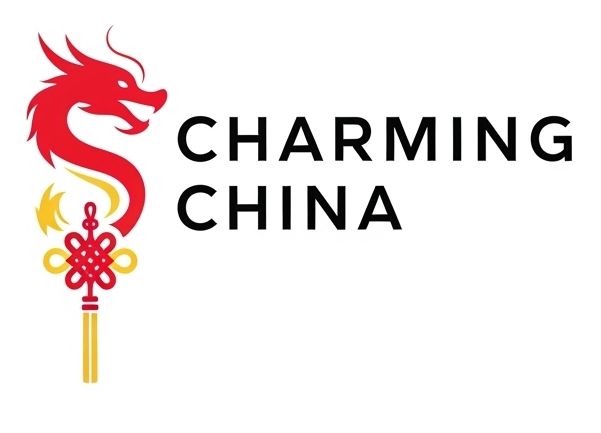Chinese Tea Ceremony for Beginners: A Guide to Elegance and Respect
The Chinese tea ceremony is more than a way to enjoy tea — it’s a living art form that embodies respect, harmony, and mindfulness. For beginners, it offers a serene introduction to Chinese culture and an opportunity to slow down in a fast-paced world. Let’s explore the beauty and symbolism behind this centuries-old tradition.
What Is the Chinese Tea Ceremony?
Known as “Gongfu Cha” (工夫茶), the Chinese tea ceremony emphasizes skillful brewing and appreciation of flavor, aroma, and aesthetics. Unlike casual tea drinking, it’s a ritual of mindfulness, where every movement reflects respect for the tea, the host, and the guests.
This practice originated in the Song and Ming dynasties and remains a cornerstone of Chinese hospitality and culture.
Essential Tools for a Chinese Tea Ceremony
To perform a proper Gongfu tea ceremony, you’ll need the “Six Gentlemen of Tea” (茶具六君子) — the essential tea tools that make the ritual graceful and precise:
- Teapot (Yixing clay or gaiwan): For steeping tea leaves.
- Fairness cup (Gongdao bei): Ensures an even flavor before pouring into cups.
- Teacups (Cha bei): Small, delicate cups for tasting.
- Tea tray (Cha pan): Catches excess water and symbolizes purity.
- Tea utensils: Tongs, scoops, and funnels used for serving tea gracefully.
- Kettle and water source: Preferably with soft water for best taste.
Each tool contributes to the ceremony’s balance of function and beauty — nothing is rushed, and every gesture has meaning.
The Steps of the Gongfu Tea Ceremony
- Performing a Chinese tea ceremony is like a dance — calm, deliberate, and elegant.
- Warming the Teaware – Pour hot water into the teapot and cups to awaken the utensils.
- Rinsing the Tea Leaves – A quick wash removes dust and opens the leaves’ aroma.
- First Steep (The Awakening) – Brew briefly and pour evenly into the fairness cup.
- Serving the Tea – Serve with both hands to show respect.
- Appreciation – Observe the color, inhale the aroma, and sip slowly to feel the tea’s “qi.”
- Multiple Infusions – Good teas can be steeped several times, each revealing new layers of flavor.
This meditative process helps participants connect deeply with nature and one another.
The Meaning of Respect and Elegance
In Chinese culture, tea represents humility, purity, and harmony.
Offering tea to guests is a gesture of respect, gratitude, and sincerity.
During family gatherings or formal occasions — such as weddings or ancestral ceremonies — tea plays a symbolic role in expressing unity and peace.
Elegance in the ceremony is not about extravagance, but inner calm and genuine intention. The host’s demeanor, the setting, and the aroma of tea together create an atmosphere of serenity.
Best Teas for a Beginner Ceremony
If you’re new to Gongfu Cha, start with teas that are easy to brew and forgiving to steeping time:
- Oolong Tea (e.g., Tie Guan Yin, Da Hong Pao): Rich aroma and smooth taste.
- Green Tea (e.g., Longjing, Biluochun): Refreshing, delicate, and perfect for mindfulness.
- Pu-erh Tea: Deep, earthy flavor that improves with age.
- White Tea (e.g., Bai Mudan): Light, floral, and gentle on the palate.
Experiment with small amounts and find the type that suits your taste and energy.
Tips for Hosting Your Own Tea Ceremony
- Choose a quiet space with minimal distractions.
- Use natural light and simple decor to highlight the teaware.
- Focus on the flow of movement — calm, gentle, and intentional.
- Treat your guests with sincerity and patience.
- End with a few moments of silent reflection to honor the experience.
The Spirit of Gongfu Tea
The Chinese tea ceremony is not about perfection — it’s about presence. Each pour, each breath, each sip becomes a way to reconnect with yourself and those around you.
Whether shared among friends or enjoyed alone, tea becomes a path toward inner harmony, respect, and elegance — the essence of Chinese philosophy itself.
FAQ
1. Is the Chinese tea ceremony difficult to learn?
No. While it looks intricate, beginners can easily start with simple steps and basic tools. The key is patience and mindfulness.
2. Can any tea be used in the ceremony?
Traditional ceremonies use loose-leaf Chinese teas like oolong, green, or pu-erh, as they hold up to multiple infusions.
3. What’s the difference between Gongfu tea and Japanese tea ceremonies?
The Chinese ceremony focuses on aroma, multiple infusions, and casual elegance, while the Japanese version emphasizes formality, matcha preparation, and symbolism.
4. How long does a ceremony usually take?
A complete Gongfu tea session can last anywhere from 30 minutes to an hour, depending on the number of infusions and guests.
5. Can the ceremony be performed alone?
Yes — solo ceremonies are common for meditation, reflection, and connecting with the spirit of tea.
